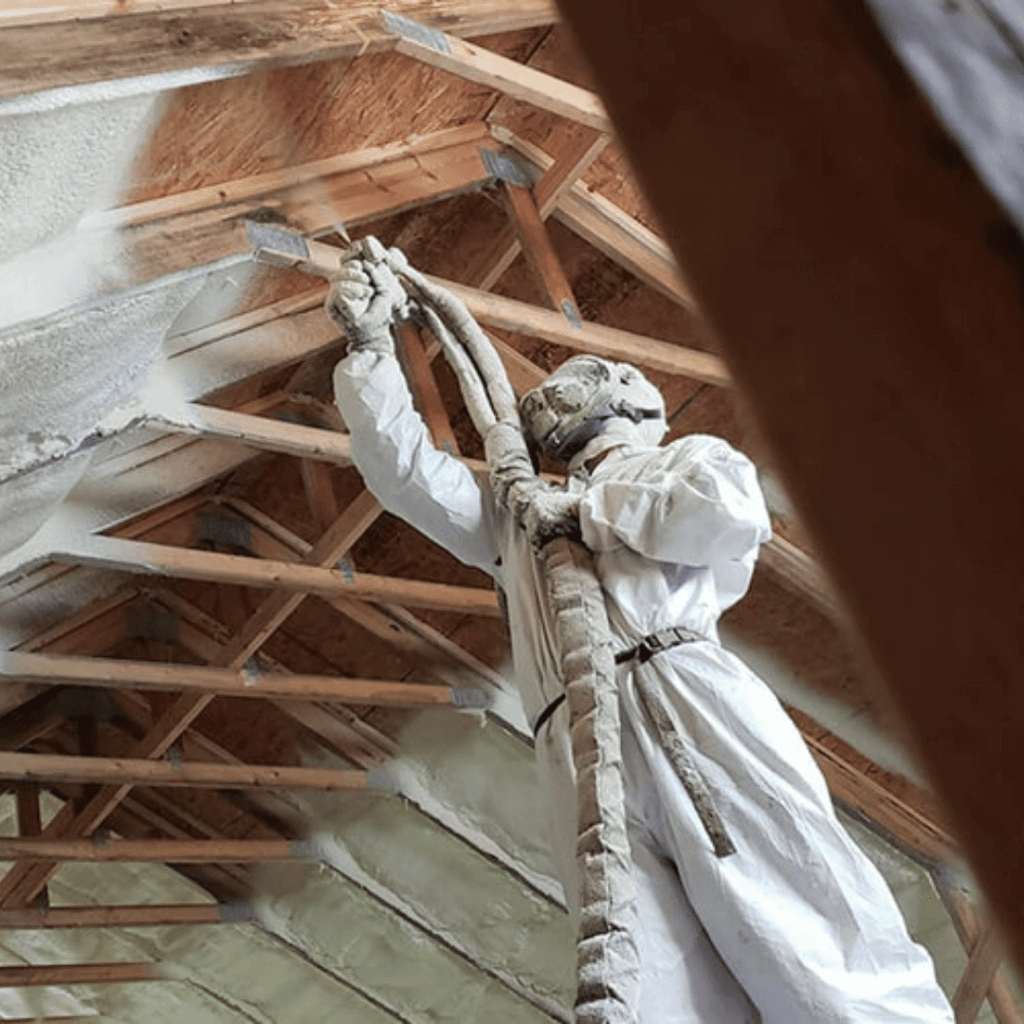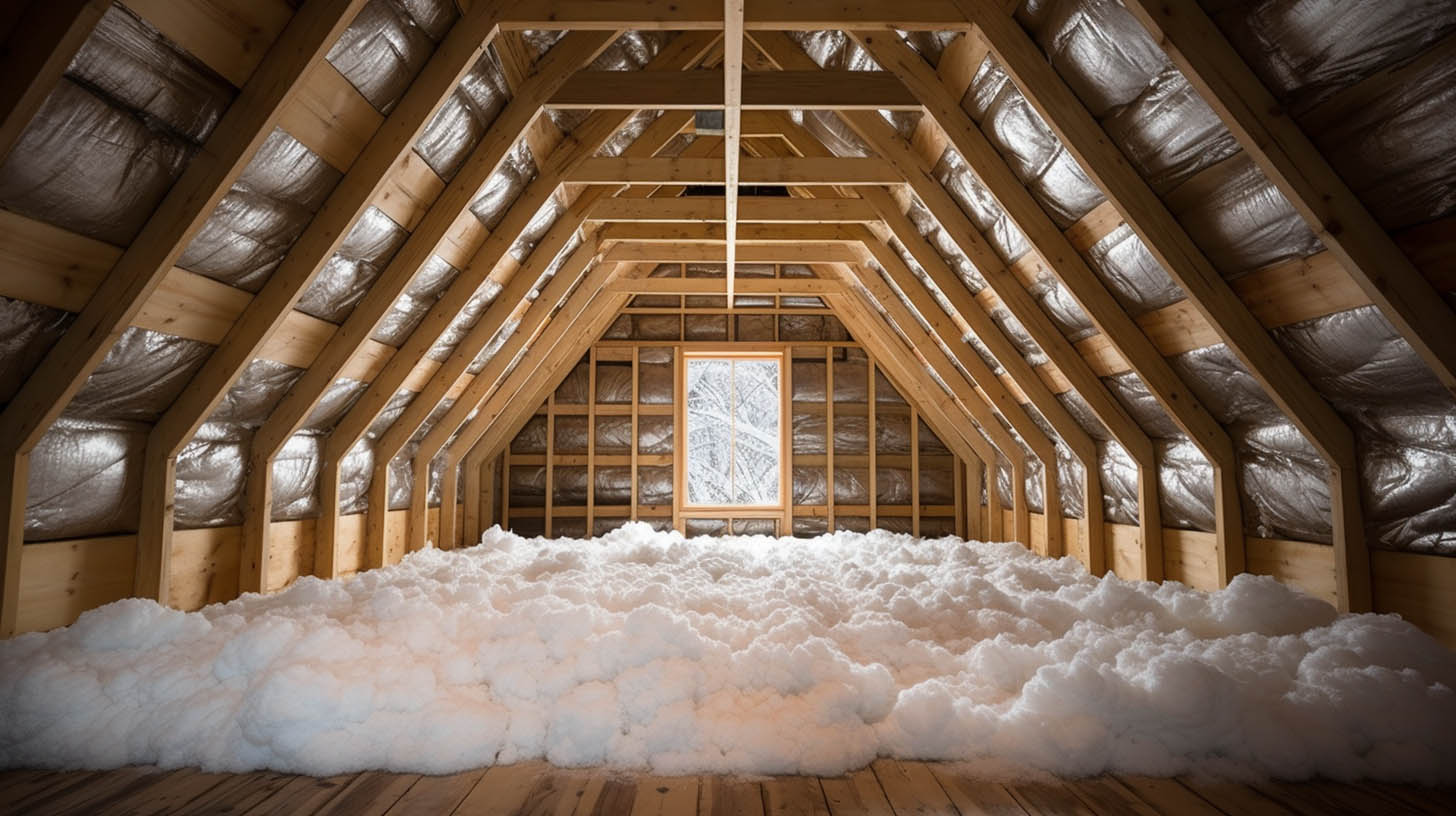Discover the Various Kinds Of Attic Insulation and Their Unique Advantages for Your Home's Power Efficiency

Fiberglass Insulation
Fiberglass insulation is among one of the most frequently used products for attic insulation as a result of its excellent thermal efficiency and cost-effectiveness. Composed of tiny glass fibers, this product properly traps air, producing an insulating obstacle that aids preserve regular indoor temperature levels. Its high R-value per inch makes it specifically effective at standing up to warmth transfer, which is vital for energy conservation in homes.
Installment of fiberglass insulation is reasonably straightforward, typically readily available in batts or loose-fill forms, accommodating various attic setups. Furthermore, it is non-combustible and immune to dampness, reducing the risk of mold advancement. This longevity adds to its long life, making fiberglass a sensible long-term investment for home owners.
In addition, fiberglass insulation is usually produced from recycled materials, which enhances its eco-friendliness. The material can also add to soundproofing, minimizing noise transfer in between areas. While it is necessary to use safety gear during setup to prevent irritability from the fibers, the total advantages of fiberglass insulation, consisting of energy cost savings and environmental factors to consider, make it a prominent selection for boosting attic efficiency and promoting a comfortable living atmosphere.
Spray Foam Insulation
Spray foam insulation is a very reliable alternative for attic room insulation, recognized for its remarkable air securing and thermal performance. This innovative insulation material is made up of a blend of isocyanate and polyol resin, which, when combined, increases quickly to fill up gaps and cavities in the attic room space. Its capacity to follow different surfaces ensures a continual obstacle against air leakages, substantially minimizing warm loss throughout colder months and warm gain during warmer seasons.
Among the key advantages of spray foam insulation is its high R-value per inch, which indicates it supplies superb thermal resistance in a reasonably thin application. This is specifically useful in attic rooms where room is usually minimal. In addition, spray foam can help lessen moisture buildup, decreasing the risk of mold and mildew and mold growth, which can be destructive to both the framework and interior air high quality.
While the initial expense of spray foam insulation might be more than standard alternatives, its long-term power financial savings, combined with enhanced comfort and improved home worth, make it a rewarding financial investment for homeowners seeking enhanced power performance. Attic Insulation DFW. Overall, spray foam insulation stands apart as an effective remedy for maximizing attic insulation
Cellulose Insulation

Cellulose insulation is a popular option for attic insulation, mainly composed of recycled paper products treated with fire resistants. This eco-friendly option is recognized for its exceptional thermal efficiency, successfully reducing warmth transfer in both summer and winter season. The dense structure of cellulose permits it to fill voids and voids in attic areas, offering a seamless barrier versus air leakages.
Among the substantial advantages of cellulose insulation is its ability to withstand mold and insects, owing to the fire resistant therapies used throughout manufacturing. Additionally, it flaunts a high R-value per inch, which converts into exceptional energy effectiveness. Homeowners can expect reduced cooling and heating expenses as a result of enhanced insulation.
Installment is commonly completed with blowing loose cellulose into the desired location, permitting for a quick and reliable procedure. This approach additionally reduces disruption to the existing framework. Additionally, cellulose insulation has a relatively low Read Full Article ecological effect, as its production process utilizes recycled products, adding to sustainable structure methods.
Rock Woollen Insulation
Among the numerous alternatives for attic room insulation, rock wool, also called mineral woollen, sticks out as a result of its impressive thermal and acoustic efficiency. Made from recycled or natural products, rock woollen is created by thawing rock and spinning it right into fibers, resulting in a product that uses superb insulation homes.
Among the considerable advantages of rock woollen insulation is its high R-value, which suggests its performance in standing up to heat circulation. This particular not only enhances energy efficiency however likewise adds to keeping a comfy interior temperature level year-round. Additionally, rock wool is naturally fireproof, making it a safer choice for homes as it can endure heats without melting or launching poisonous fumes.
In addition, rock woollen insulation succeeds in soundproofing abilities, properly lowering sound transmission in between rooms and from outside resources. This makes it a suitable option for home owners seeking a peaceful living atmosphere. Furthermore, rock wool is moisture-resistant, assisting to avoid mold and mildew development and preserving the architectural honesty of the attic room area. On the whole, rock woollen insulation gives a thorough option for boosting energy efficiency, safety and security, and convenience in domestic settings.
Radiant Barrier Insulation
Glowing obstacle insulation functions as a reliable service for decreasing heat transfer in attics, specifically in warmer environments. This kind of insulation works by showing induction heat far from living areas, thus decreasing the quantity of warmth that enters a home throughout heat - Attic Insulation DFW. Normally composed of a highly reflective material, such as aluminum foil, radiant barriers are set up in attic rooms, encountering the roof covering, where they can intercept incoming warm from the sun
The main advantage of glowing barrier insulation is its capacity to lower air conditioning prices. By showing warmth instead of absorbing it, radiant obstacles can assist preserve Our site a much more steady indoor temperature, minimizing the workload on cooling systems. This effectiveness translates right into lower power costs and enhanced convenience for homeowners.
In enhancement to energy financial savings, glowing obstacles can likewise add to enhanced indoor air high quality. By decreasing warmth build-up, they aid decrease moisture degrees, which can prevent mold development and boost total air circulation. When set up properly, glowing obstacle insulation can be a very useful addition to any type of energy-efficient home, making it a worthwhile consideration for property owners looking to improve their attic insulation approach.
Conclusion
To conclude, recognizing the numerous kinds of attic insulation-- fiberglass, spray foam, Full Report cellulose, rock wool, and radiant obstacles-- enables property owners to make educated decisions relating to power efficiency. Each insulation kind offers distinct advantages, such as premium thermal resistance, moisture administration, and sound depletion. By picking the proper insulation material, considerable decreases in energy prices can be achieved, along with improvements in indoor comfort. Eventually, the right option contributes to a more lasting living environment and advertises general energy preservation.

In conclusion, recognizing the various kinds of attic room insulation-- fiberglass, spray foam, cellulose, rock woollen, and glowing obstacles-- makes it possible for property owners to make informed decisions relating to power effectiveness.